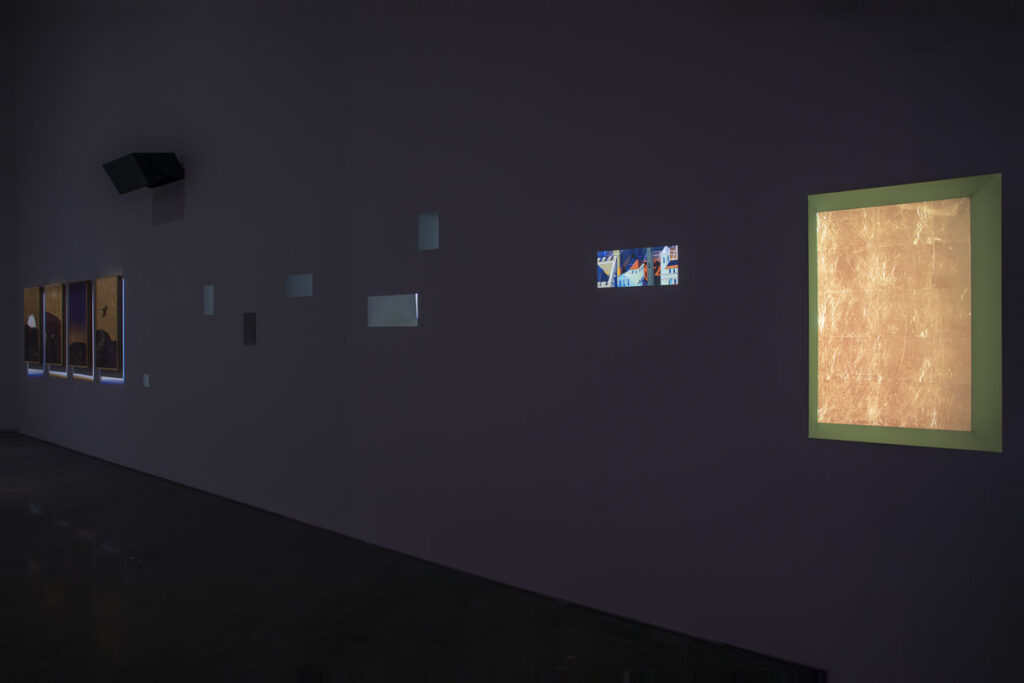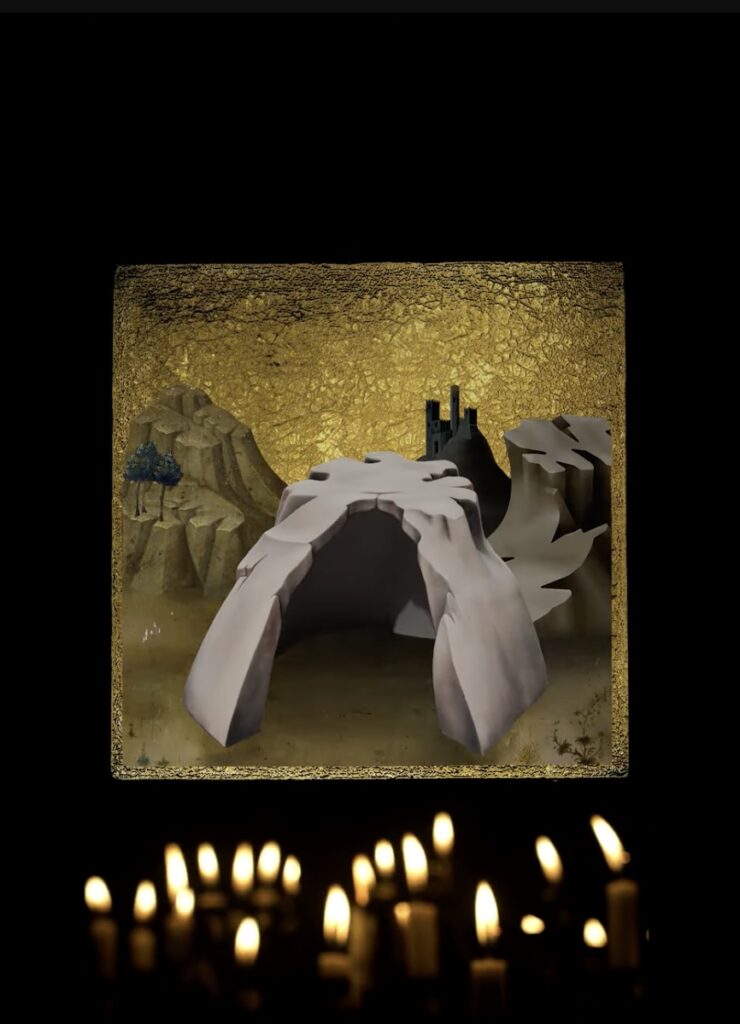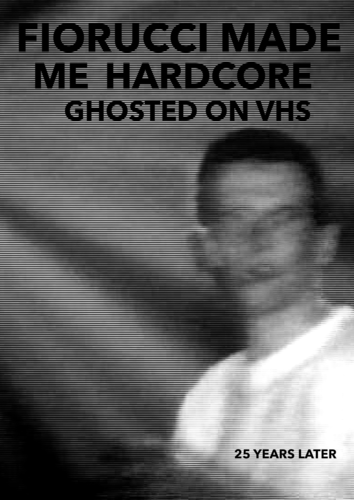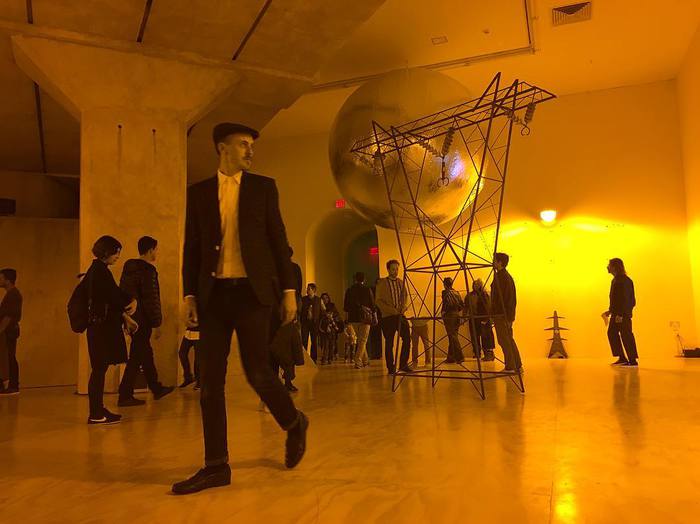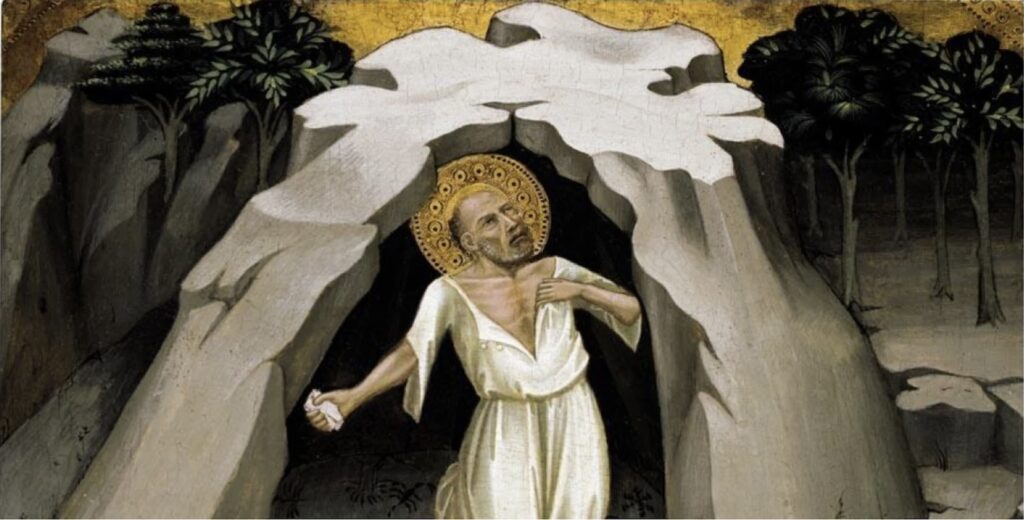
In 1965, during its 50-year disappearance into a private collection beginning in 1929, this painting of Jerome in a stylized grotto-like cave was reattributed from Pietro Lorenzetti to Lorenzo Monaco, and proposed as one of five predella panels from an altarpiece/polyptych Lorenzo executed for a chapel at Santa Maria del Carmine in Florence between 1398 and 1400.
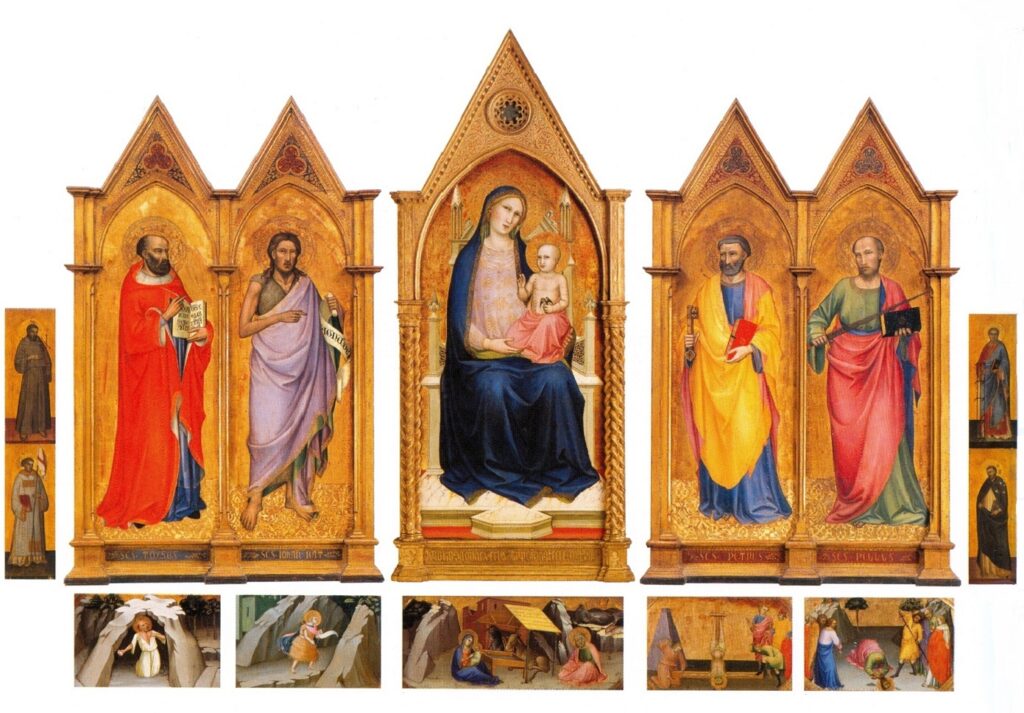
It turned up at Sotheby’s in 1988, then again in 2005, and was to be part of the first reuniting of the polyptych in the 2006 Lorenzo retrospective at the Galleria dell’Accademia. It didn’t sell, and I don’t know that it was lent to the show, but the wilderness geology of the various predella panels would look great together.
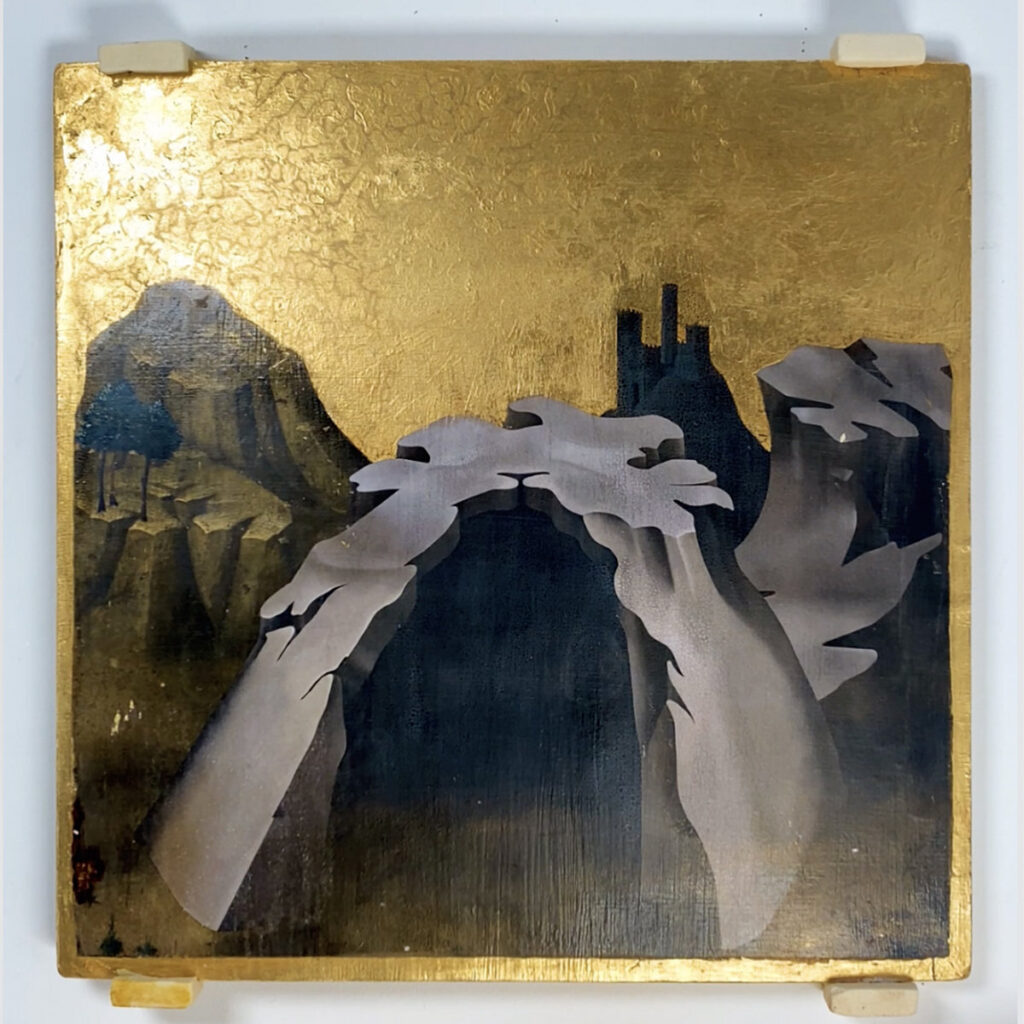
When Mark Leckey made a gold-ground painting for his 2022 audio work, Carry me into the wilderness, he gave a shout out to Lorenzo Monaco, where he got the cave, but he squared it up, and added a hilltop city or citadel. And the hermit saint who wasn’t there was Saint Anthony, the Desert Father and ur-Hermit. While the possible theological nuances of Leckey’s saintswapping are lost on me, I find this image of the empty hermit’s cave resonates with the central sample of Carry me into the wilderness: a recording Leckey made of himself being overcome by a moment of natural beauty while in a park during the lockdown phase of the COVID pandemic. The liberated hermit here, was him, and us.

